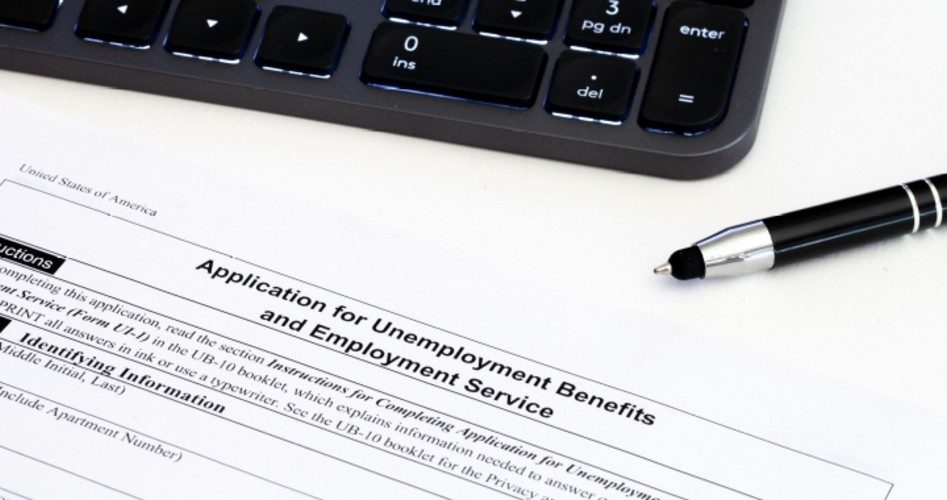
Another week, another bad report from the Labor Department.
The number of those filing unemployment claims is steadily dropping, but remained close to two million for the week ending May 30.
Total unemployment claims for May were 12.3 million.
The total since March 1, about when the Chinese Virus pandemic began and public officials foolishly locked down the country indefinitely, is more than 43 million.
And as with the past few weeks that have seen a decline in claims, the number of those joining the ranks of the unemployed suggests the damage will continue for some time as it slowly dissipates.
The Latest
During the week ending May 30, 1.877 million applied for jobless benefits, the department reported, 249,000 less than the previous week’s 2.216 million. The slowdown represented a 11.7-percent drop.
But that decrease, or the 13.2-percent dip from the week before, did not mean fewer people were unemployed. The unemployment rate for the week ending May 23 was 14.8 percent, an increase from the previous week’s rate of 14.3 percent.
The numbers going back to March 7 offer a dark picture of the damage public officials have done (numbers in thousands):
March 7 — 211
March 14 — 282
March 21 — 3,307
March 28 — 6,867
April 4 — 6,615
April 11 — 5,237
April 18 — 4,442
April 25 — 3,846
May 2 — 3,176
May 9 — 2,687
May 16 — 2,446
May 23 — 2,126
May 30 — 1,877
Total — 43.12 million
Week-to-week, the number of those who apply fluctuate wildly from state to state. The states with the largest increases in claims for the week ending May 16 were these:
Maine — 11,941
Oklahoma — 10,274
Michigan — 7,859
Kentucky — 6,417
Oregon — 4,913
The states with the largest decreases were these:
Washington — 90,683
Florida — 49,993
California — 41,169
New York — 34,785
Illinois — 14,517
The same week, the department reported, 10.7 million people across 35 states applied for Pandemic Unemployment Assistance, while another 209,692 claimed pandemic emergency unemploment compensation. Those claims have been steadily increasing week to week.
Unemployment rates across the states are ticking up and down slightly each week, and large decreases in the number of unemployment claims seem to improve the jobless-rate situation.
Washington reported more than 90,000 fewer claims; joblessness dropped from 31.2 percent to 17.7, or a 43.3-percent drop. Then again, New York’s claims dipped nearly 35,000, but the jobless rate dipped only 0.7 percent, or a 3.6-percent drop.
State — May 16 / May 9
Nevada — 24.9 / 26.7
Maine — 22.9 **
Michigan — 22.9 / 23.1
Puerto Rico — 22.7 / **
Hawaii — 20.6 / 23.4
New York — 19.2 / 19.9
Rhode Island — 18.6 / 18.8
Washington — 17.7 / 31.2
Louisiana — 17.4 / **
New Hampshire — 16.8 / **
** Not on list
Monthly Numbers
All those numbers mean one thing: a wrecked economy that was booming before the Chinese Virus landed, and public officials panicked and ordered a nationwide lockdown of any buiness or activity they capriciously deemed “non-essential.”
End result: A massive increase in unemployment starting in mid-March when claims for benefits exploded.
Jobless claims were still less than 300,000 in the week ending March 14. Then the volcano blew: 10.1 million people applied for benefits the following two weeks. The month’s total was 10.7 million.
Another 6.6 million applied in the first week of April. By month’s end, another 20.1 million, double the number in March, had applied, which brought the two-month tally to a whopping 30.8 million claims and 14.7-percent unemployed.
May’s five-week figure was 12.3 million, a 39-percent decline from April. Claims dropped an average of 324,000 per week in May.
If that figure holds, unemployment claims for the week ending June 6 should be about 1.5 million.
May’s unemployment rate is due out in the next few days. The rate was 4.4 in March, then climbed to 14.7 in April, the highest figure since the end of 1940, when it was 14.6 percent.
Question is, will the steady decline in claims since the peak — 6.9 million the week of March 28 — mean a lower unemployment rate?
Image: Eblis/iStock/Getty Images Plus
R. Cort Kirkwood is a long-time contributor to The New American and a former newspaper editor.




